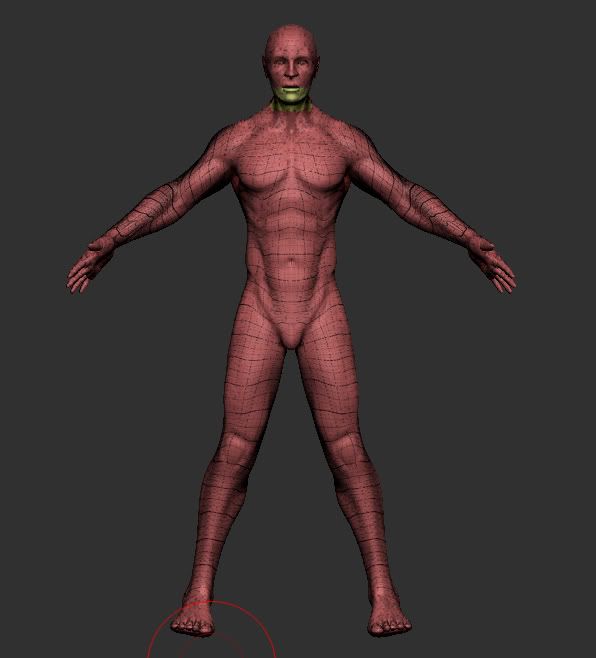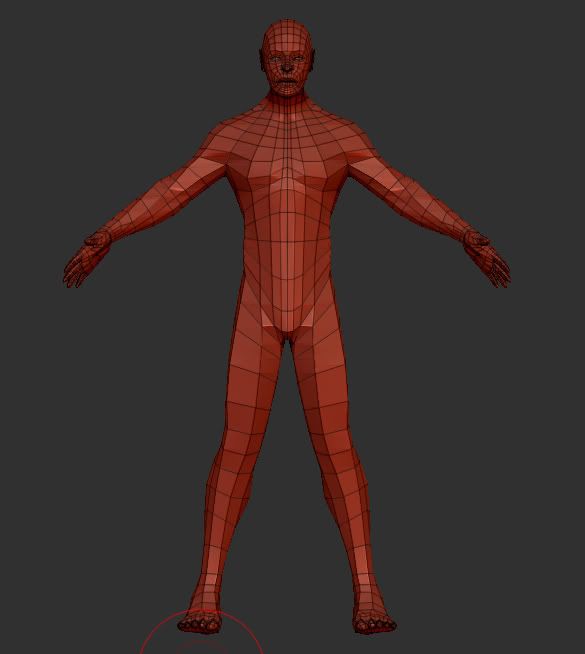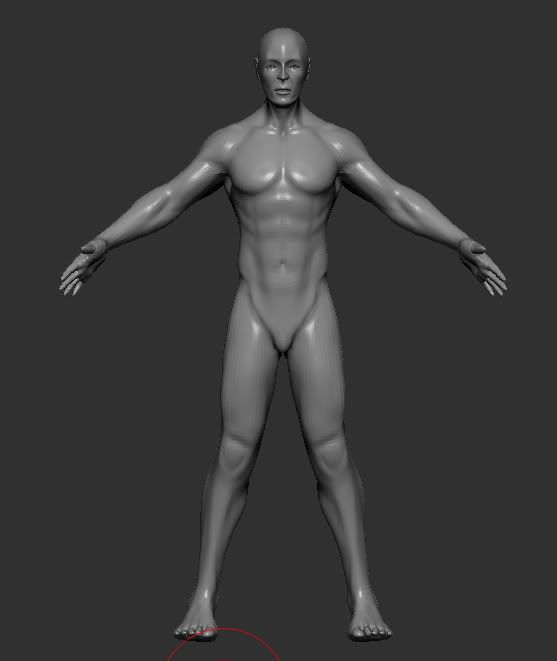The BRAWL² Tournament Challenge has been announced!
It starts May 12, and ends Oct 17. Let's see what you got!
https://polycount.com/discussion/237047/the-brawl²-tournament
It starts May 12, and ends Oct 17. Let's see what you got!
https://polycount.com/discussion/237047/the-brawl²-tournament
Digital Human Sculpt Process
Following Scott Spencer's Digital Human book. At the retopology stage. After several hours of trial and errors I finally got a semi-decent projection. But I still came across some projection errors where I had to use the morph brush to literally erase some parts completely.
Now I'm gonna resculpt the lost details. Then I will attempt to do a costume.
It was a great learning process, with my next project I will definitely have a smoother process and a better projection.

High Poly Sculpt

Retopo Mesh

Projected Mesh
Any feedback on the figure so far will be greatly appreciated.
Now I'm gonna resculpt the lost details. Then I will attempt to do a costume.
It was a great learning process, with my next project I will definitely have a smoother process and a better projection.

High Poly Sculpt

Retopo Mesh

Projected Mesh
Any feedback on the figure so far will be greatly appreciated.
Replies
There's nothing *technically* wrong, with the figure, yet everything seems wrong.....
I, myself, have recently dwelled into sculpting the human figure for the first time.
It has its rules:
.- the body, head to feet, is *about* 8 heads tall
-. the collar bone is about 2 heads wide
.- the center of the height is about at the point where the penis should attach (thus the end of the pubic bone area)
-. hip bones are about as wide as the rib cage (wider in the female figure)
I've been given these schemes by kind souls here on Polycount, they helped quite a bit....
Plus a book: "Atlas of Human Anatomy for the Artist", by Stephen Rogers Peck.
I've found it very useful to understand volumes, shapes and landmarks of the human body.
First study it, then use it to *decipher* actual human references, like photos taken from the Internet.
The book is well made, but hand drawn, and not all shadows and highlights are always easy to comprehend as 3D volumes. Actual human references will help you make sense of certain ambiguities.
My advice is to *NOT* look at other people's sculpts until you're done *understanding* the human body. Sculpts are subjective, interpretative, two people may see and render different shapes while looking at the same body, and both might make minor anatomical errors.
And since your own sculpts are going to be your own interpretation of the human figure, by using other people's works as a reference you'd end up sculpting an interpretation of an interpretation. Bound to yield debatable results.
Another book I'd suggest is "Anatomy for Sculptors", by Uldis Zarins.
Less "scientific" and more practical/technical, compared to the first one, very useful to understand fat deposits and how the shapes of the human body change with movement.
It's literally targeted for sculptors, like marble sculptors, but I'd say it has its use for videogames sculptors as well.
It took me a week of study, to produce a decent result, and I can still see several mistakes here and there.
Thus be patient, it's quite the heavy subject to master, I'd say nothing less than a couple of months and 20 sculpts just to become even barely confident.
Always ask for feedback, your eyes will start making up all kind of excuses after 3 hours looking at your own sculpt.
Also, make screenshots from various angles, go outside the room for a break and then go back and *analyse* them.
This will force you to focus on what you have in front of you, rather than distracting you with the possibility of turning the model around, and most likely will reveal all kinds of errors that you just couldnt (or plainly refused to) see before.